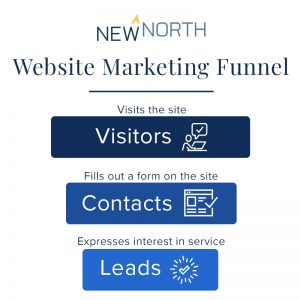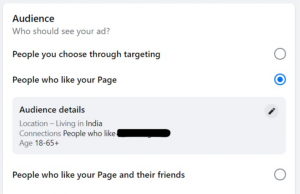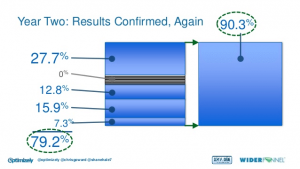— May 29, 2019
In last week’s blog, we discussed how well-utilized humor can enhance your marketing materials and increase engagement. This week, we’ll take a deep dive into the specifics of using humor – and how to avoid common mistakes.
Humor is never a magic bullet. While it has the power to enhance your campaigns, it’s important to align it with your brand and audience. Like any tool, it’s more impactful in some circumstances than others.
When to Use Humor in Marketing
Humor lightens the tone of your communications, so it’s best to use it on occasions when the information you’re conveying is something positive or lighthearted.
For example, an email informing users of a sale is a fun, exciting opportunity to integrate humor into your strategy. On the other hand, if you’re writing to let someone know that their order failed to process – it’s probably best to remain short and simple.
Why You Should Keep the Marketing Humor Positive
One of the most important factors when utilizing humor is to keep your tone upbeat and non-derisive. Customers don’t like being made of, and humor in your marketing should never come at the expense of the reader.
In general, it’s best to keep your humor broad and upbeat. Choosing the wrong kind of humor can be costly. GoDaddy was forced to pull its 2015 Super Bowl ad because it seemed to make fun of animal cruelty. Snickers landed itself in hot water after an ad featuring Mr. T made fun of a man in tight shorts.
While it’s true that certain companies have branding and audiences that align with riskier humor, it’s best to proceed with caution. Here are some tips to help keep your humor on track and on brand.
1. Be Careful with ‘Blue Humor’
“Blue” is a comic term for content that errs on the side of poor taste. In general, it’s good to keep marketing humor as appealing to a general audience as possible. While it can sometimes be okay to use coarse language in a very specific marketing situation, it’s generally best to avoid taboo subjects.
For most brands, a helpful tip is the grandparent trick. Simply ask yourself “If my grandparents saw this, would they be offended?”
If the answer is yes, it’s usually best to avoid it, unless your brand is specifically known for its edgy humor.
2. Keep Humor Relevant
When writing a funny piece of copy or designing a humorous graphic, it’s easy to get caught up in the funny bits of your work. But don’t fall into the trap of trying to force a joke.
The goal is to integrate humor into your marketing in a seamless way, not to sacrifice substance for wit. Remember, the shorter your emails are, the more likely they are to be read in their entirety.
What does this mean for marketers? Don’t exhaust your customers’ energy with jokes and forget to provide them with useful information. This is likely to come across as more annoying than humorous because there’s nothing funny about wasting your customers’ time.
3. Avoid Social Issues
Sometimes brands decide to take a stand on a social issue. While that’s an individual choice, it’s almost never a good idea to make light of it. Pepsi was famously forced to apologize when it aired an ad showing Kendall Jenner quelling a protest by offering a soft drink to a police officer. While the ad wasn’t actually intended to be funny, the public saw it as a parody of social movements, and the response was anything but positive.
Attempting to inject humor into tense cultural moments happens, but brands are rarely successful when they make light of serious situations.
Now that we’ve covered what to avoid, let’s talk about good ways to add humor to your emails.
1. Play With What Your Brand Does
I’m sure you know your value props by heart. Now is your chance to use your imagination. Think about the problem that your brand solves and present it in a new way.
One brand that does this consistently well is Tushy, an ecommerce brand specializing in bidets. Its marketing copy is light and funny, and its lead capture strategy offers users the chance to join the “clean butt club.”
Notably – the humor is never overtly crass. They’re not using the opportunity to make explicit toilet jokes. Instead, their frankness about their product comes across as earnest, fun, and appealing.
2. Use Wordplay
Wordplay, often referred to as “Dad Jokes,” are a safe bet for making your emails fun without being too over the top. For instance, let’s say your a brand specializing in cookware. Instead of a subject line like “Save 20% on Appliances,” try something like this.
- We’ve Whipped Up a Discount for You
- We Won’t Simmer Down – Sale is Going on Now”
- “This Sale is Amazing” – Your Kitchen
- In 24 Hours, This Deal is Toast
3. Make Humorous Comparisons
Comparisons are an interesting way to demonstrate your value prop. Adding a touch of humor can make them even more effective. Famed pitchman Ron Popeil used a version of this technique to sell knives. In his product demonstrations, he used a bread knife to cut through funny and unusual items like shoe leather and aluminum cans, to great visual effect.
The format for this is simple. “Doing X without our Product is Like Doing X with an X.” An example of this would be:
Cooking without our product is like trimming hedges with a butter knife. Sure it’s possible, but don’t you have other things to do?
Wrapping Up
Humor is a great tool for marketers to increase audience engagement with their content. By avoiding touchy topics and keeping humor relevant to your audience, you’ll create content that customers enjoy and actively seek out. Give humor a shot in your next email remarketing or on-site engagement campaign to see what a difference it can make.
Digital & Social Articles on Business 2 Community
(73)




